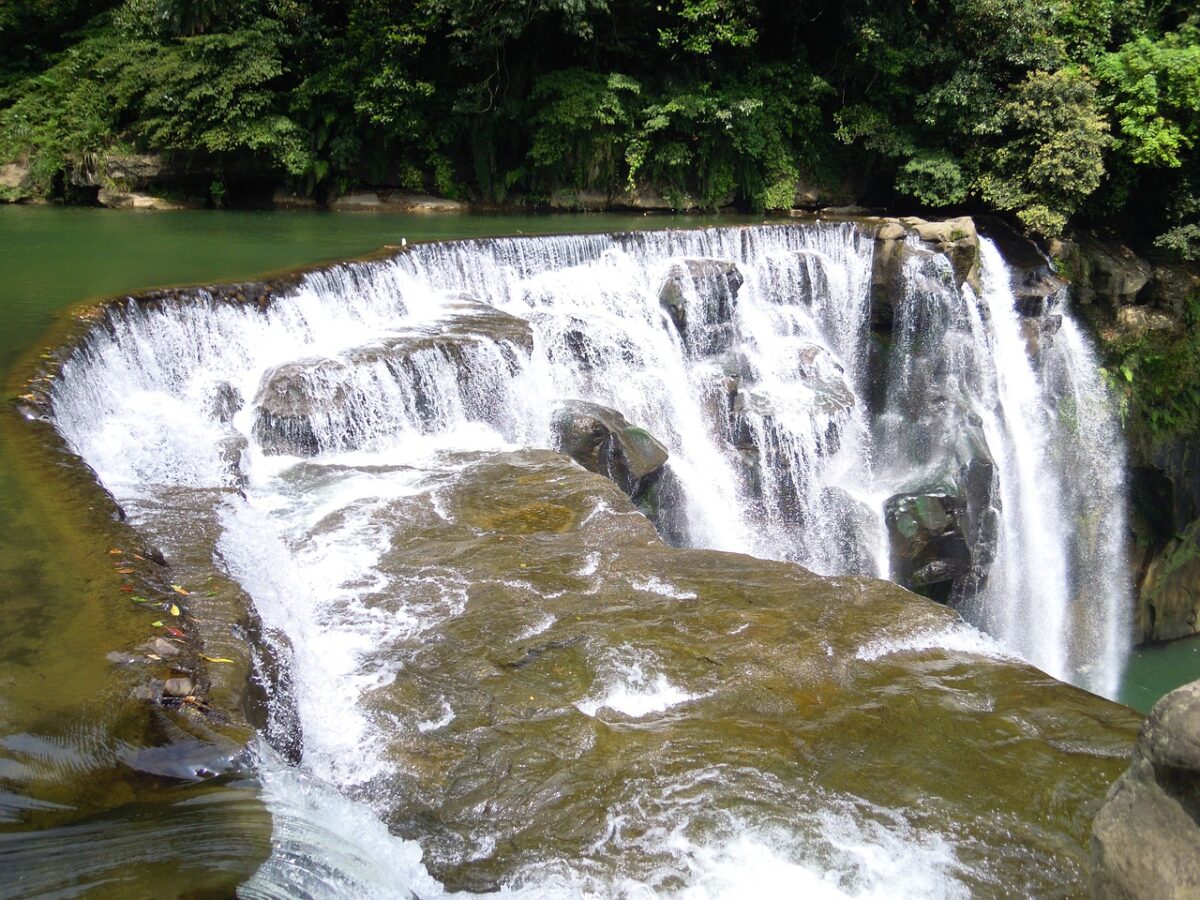Pingxi Branch Railway & Shifen | Taiwan
 For both the island’s indigenous people and for Han migrants arriving from the Chinese mainland, the narrow valleys east of Taipei were never especially attractive to settle. The rugged terrain and wet climate made agriculture difficult. And because the topography impeded movement and communication, this region had a serious bandit problem well into the 19th century. Only after the demand for coal grew – thanks to both domestic sales and foreign steamships putting into nearby Keelung – did the isolated pioneer hamlets develop into substantial settlements.
For both the island’s indigenous people and for Han migrants arriving from the Chinese mainland, the narrow valleys east of Taipei were never especially attractive to settle. The rugged terrain and wet climate made agriculture difficult. And because the topography impeded movement and communication, this region had a serious bandit problem well into the 19th century. Only after the demand for coal grew – thanks to both domestic sales and foreign steamships putting into nearby Keelung – did the isolated pioneer hamlets develop into substantial settlements.
Significant hydrocarbon deposits were discovered in 1907 near what’s now the terminus of Pingxi Branch Railway. Completing this railroad in 1921 was no mean feat. In the 12.9 km (8 miles) between Ruifang and Jingtong, it goes through six tunnels and across fifteen bridges. Built to carry coal, it now ferries both local residents and large numbers of tourists.
Coal’s domination of the local economy until the 1970s is hard to exaggerate. At one point, 14 collieries employed four out of five of the area’s ablebodied working-age men. And as at Jiufen and Jinguashi, the decline and eventual collapse of the mining industry caused at least half of the population to seek opportunities elsewhere.
 Nowadays, if it weren’t for tourism, it’s hard to imagine how places like Pingxi and Shifen would survive. At weekends and during the summer holidays, they (and the trains themselves) are often crammed to the gills with sightseers. For a more relaxing experience, schedule your visit for midweek. And if you’d rather go back the way you came, consider leaving by bus to the Taipei suburb of Muzha (location of Taipei Zoo and connected to the rest of the metropolis by the metro’s Brown Line) or the less frequent service to the beach town of Fulong.
Nowadays, if it weren’t for tourism, it’s hard to imagine how places like Pingxi and Shifen would survive. At weekends and during the summer holidays, they (and the trains themselves) are often crammed to the gills with sightseers. For a more relaxing experience, schedule your visit for midweek. And if you’d rather go back the way you came, consider leaving by bus to the Taipei suburb of Muzha (location of Taipei Zoo and connected to the rest of the metropolis by the metro’s Brown Line) or the less frequent service to the beach town of Fulong.
In addition to enjoying the rugged and extremely green scenery that can be seen from the train, visitors to the Shifen area are drawn to its impressive waterfall. Calling it Taiwan’s Niagara Falls is an exaggeration of course – but this cascade is a photogenic delight. About 20 m (66 ft) in height and 40 m (131 ft) wide, it’s accessed via a well-signposted path that starts near Shifen’s railway station. Allow half an hour to get here, because you’ll want to go slowly to enjoy the view. Admission is free.
The penultimate stop of Pingxi is synonymous with the launching sky lanterns, wire frames covered with paper and propelled upwards by heat from a wick burning inside. It’s said that the custom (which in recent years has spread to Shifen and a few other places) dates from the era of lawlessness as a way for remote farmsteads to reassure their neighbours that all was well; not sending a lantern off into the night sky would alert those nearby that robbers or rustlers were at work. Nowadays visitors can paint their wishes or a good-luck message on the sides of a lantern and watch it float upwards. For many tourists, this is a romantic and inexpensive ritual – but it isn’t something we at Life of Taiwan encourage, as lantern fragments often end up in trees and streams. What with the quaint streets and good-natured vendors, there’s plenty to see and do here without causing rural pollution.
Between Ruifang and Shifen, Houtong Coal-Mine Ecological Park preserves several coal-related relics, artefacts, and structures. Seeing everything requires a good bit of walking but for those interested in industrial heritage it’s an absorbing place. There are no admission charges and it’s usually possible to park a car for free. For many visitors, Houtong’s key attraction isn’t industrial heritage but its feline population. This sleepy village – a bustling town of 6,000 during the coal industry’s heyday – seems to have almost as many cats as humans. As you’d expect, there are shops selling cat-themed souvenirs and cafes, but some of these businesses are only open at weekends and during peak season.
Getting to and from Pingxi, Shifen, and Houtong by public transport makes a lot of sense because the area’s roads don’t offer ideal driving conditions. That said, exploring the region through a Life of Taiwan private guided tour allows for far greater flexibility in terms of timing and geographical scope. With an early start and one of our experienced bilingual driver-guides you could also visit Shuangxi Old Street (a seldom crowded slow-travel favourite) and Tianliaoyang Wetland. Birdwatchers make a beeline for the latter because no fewer than 335 avian species have been recorded here; the only place in Taiwan that can boast of a greater variety of birds is Yeliu. Photography enthusiasts are drawn to the wetland for a different reason: At the right time of day, it’s often possible to snap an excellent picture of an Yilan-bound train passing a rich green landscape.

